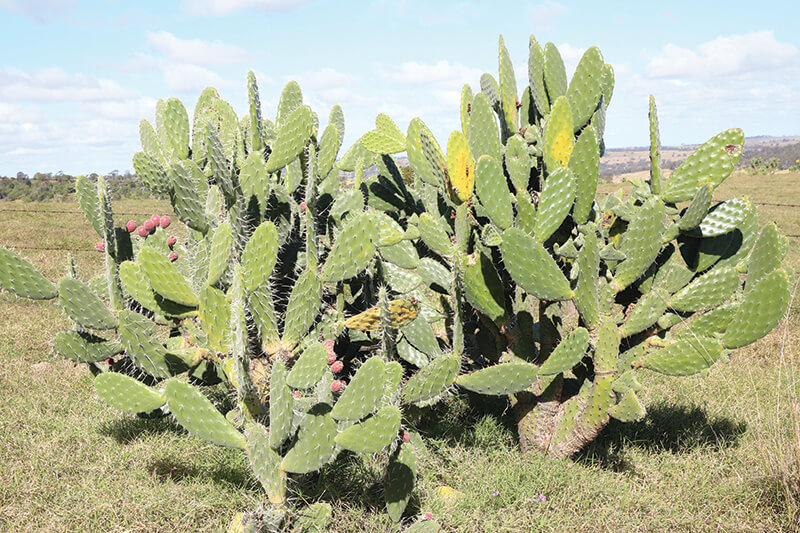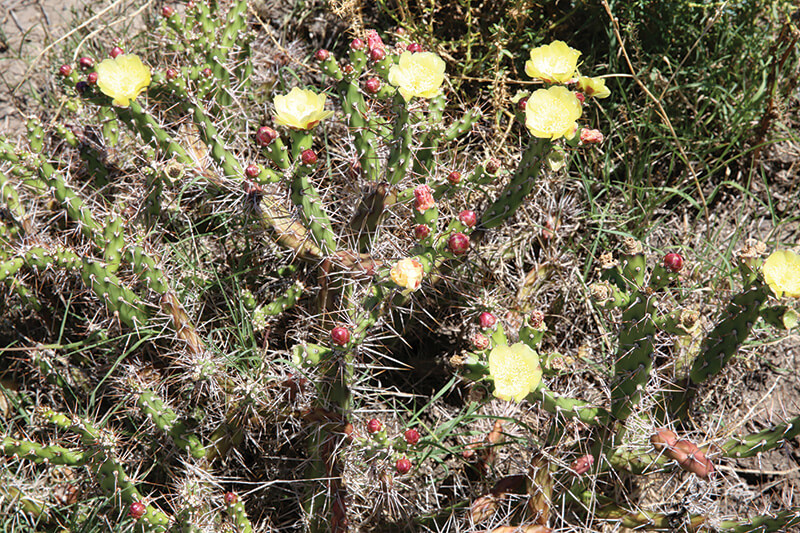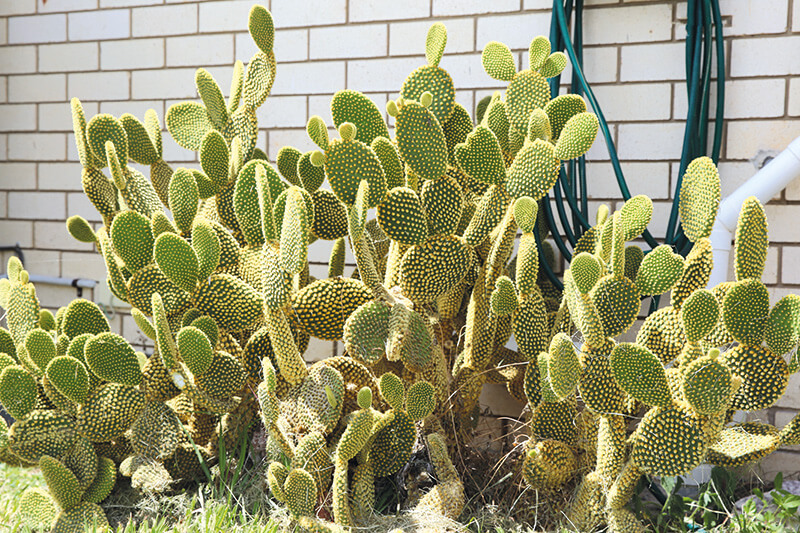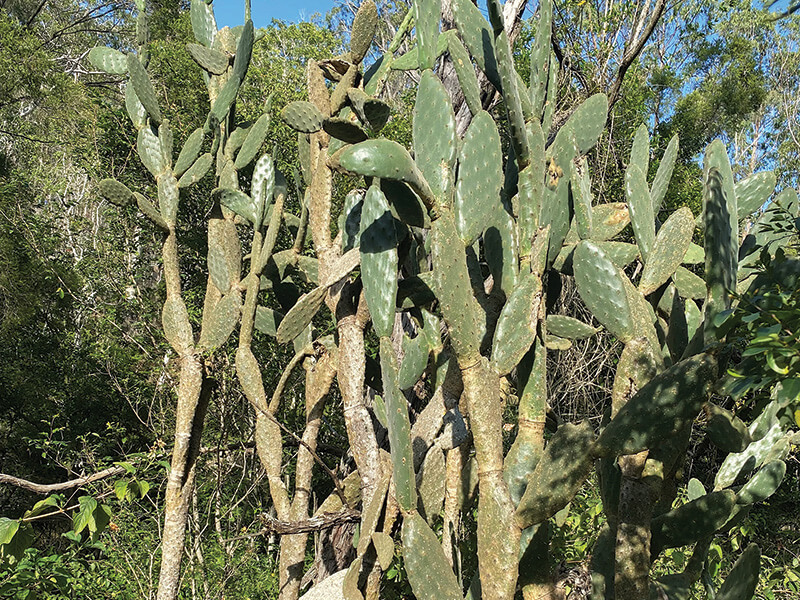Opuntias are a genus of cacti that includes the infamous Prickly Pear and the Velvety Tree Pear, which is profiled on the facing page. There are no cacti native to Australia, but they grow incredibly well here, especially in drier parts of the country.


There are many factors that make Opuntias difficult to control and manage. Firstly, they reproduce and spread across the landscape easily. Their reddish-purple fruits are readily eaten by wildlife and their seeds are dispersed in the scats of bird, feral pigs, deer, foxes and small mammals. All Opuntias also reproduce asexually from a leaf pad or fruit that has landed on the ground. So if a large tree pear falls to the ground, it can sprout from every live leaf pad that touches the ground. The vegetative parts of cacti can also easily get caught and distributed in vehicles, footwear, wildlife, livestock, floodwaters and dumped garden waste.

Secondly, there are no naturally occurring insects or animals that control weedy cacti, except for the biocontrol agents that have been deliberately introduced. Thirdly, cacti are popular ornamental garden plants and are collected, propagated and sold in backyard nurseries. Some are even sold online and are posted to buyers as cacti can survive long periods without light or water.
There are 12 species of weedy cacti established in Queensland and they are difficult and expensive to manage. Once naturalised, cacti pose a serious risk to people, wildlife, stock and agriculture.

This article focuses on the four most commonly found Opuntias in SEQ. All are regulated (banned) under the Biosecurity Act 2014. The Indian Fig (Opuntia ficus-indica) is one to watch out for. It is currently unregulated and cultivated for its fruit, however this species can escape into bushland, especially ironbark and Brigalow forests, and may become an invasive weed in the future.
A team at Biosecurity Queensland is tasked with managing the illegal trade of regulated cacti in SEQ. Over the last financial year, they seized over 1600 regulated cacti from 18 different species. If you want to grow cacti, only buy them from registered nurseries. If you are aware of banned cacti being kept or sold, please call your local council or Biosecurity Queensland on 13 25 23. Many of the regulated cacti infestations in Queensland started out as ornamental backyard garden plants.
Deborah Metters
Regional Coordinator
Thanks to Martin Bennett at Lockyer Valley Regional Council and Stacy Harris at Biosecurity Queensland for help with this article.

This is a very interesting article that is very applicable to our property.